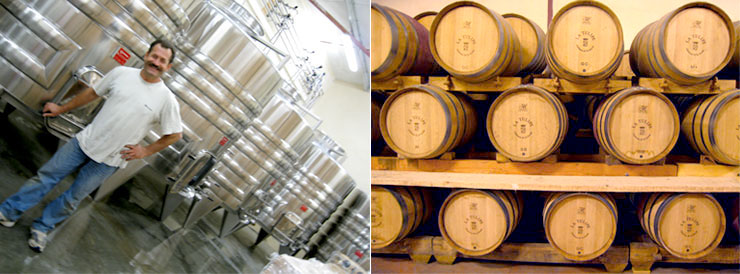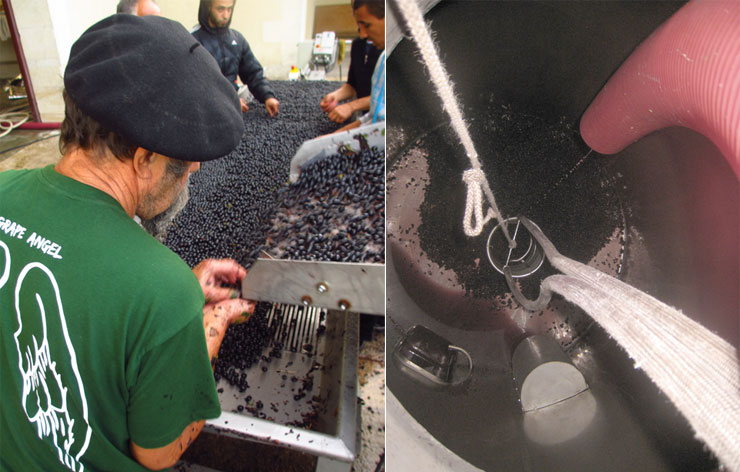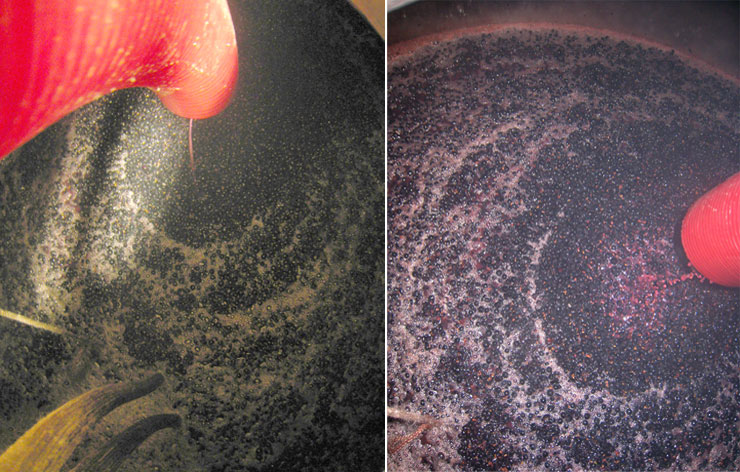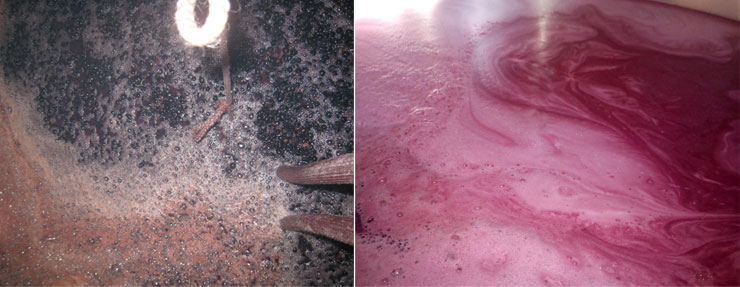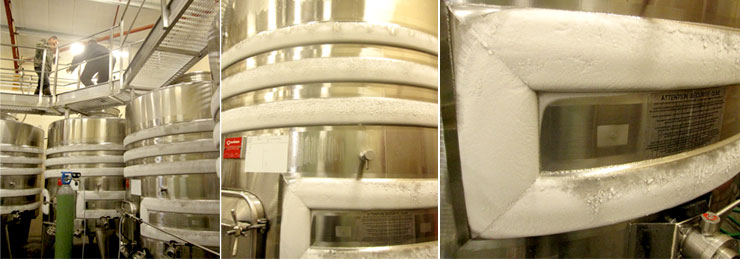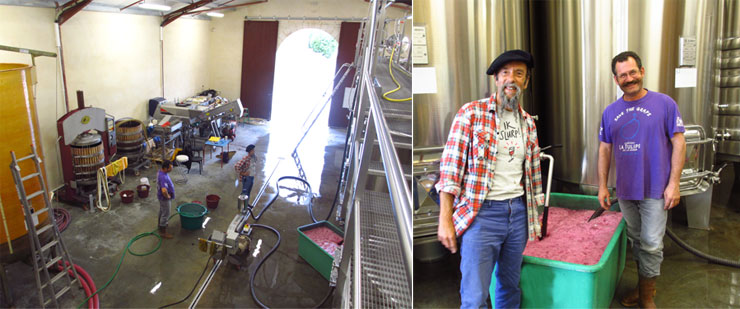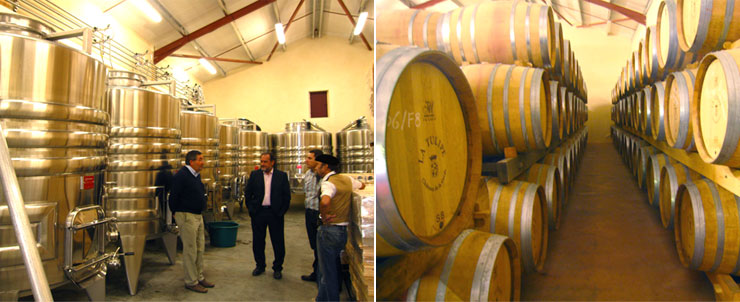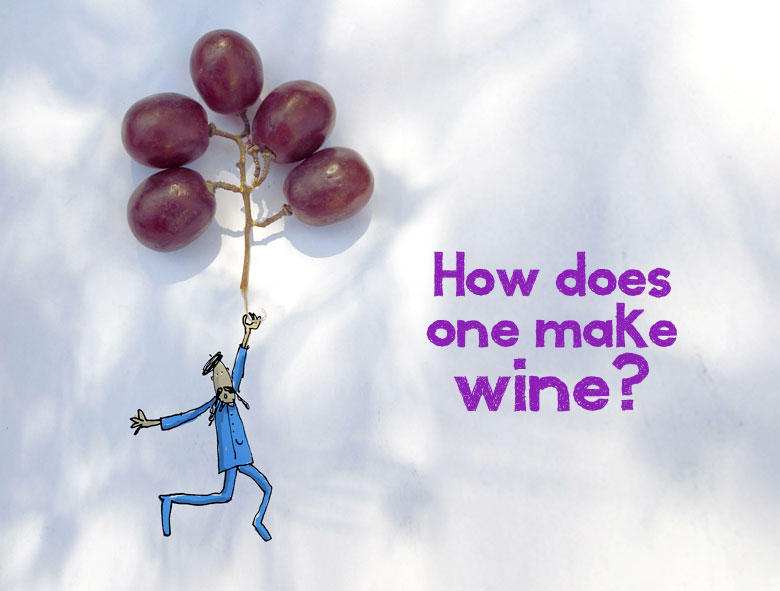
| People often think that the choice of materials in the wine making process reflects the style of the winemaker. Stainless steel is hip, while oak is thought to be old school. Not so. It's not a case of either/or; any self-respecting winegrower uses both. |
| After a strict selection process at the sorting table, the grapes are deposited in stainless steel cuves. |
| Tightly packed together they squeeze out their juices with their own weight. The grape skins are crawling with yeast bacteria, which have been waiting all year for this moment. Grunting greedily, they pounce on the innocent grapes. |
|
In their millions they gorge themselves on the sugar in the grapes, to excrete it later as alcohol. But the grapes don't give in without putting up a fight. Battling bravely in the darkness of the cuves they resist with all their might. |
| The temperature rises, the juice, pulp and skin mixture starts to bubble and foam, and the cuves heat up. They get hot enough that you can feel it on the outside of the tanks. |
| This battle of life and death is called 'pre-fermentation'. The slower the fermentation proceeds, the fruitier the wine will taste. You can slow down the fermentation by cooling the juice. |
|
For that purpose the cuves are fitted with a cooling system. While behind the steel the battle between the grapes and their assailants rages on, we reduce the temperature down to 4 degrees Celsius, to slow down the fermentation as much as possible. |
| After leaving the grapes in the cold for about a week, we begin to heat up the tanks. To just under 32 degrees Celsius. And not a single degree over, because the bacteria cannot survive temperatures higher than 32°C. Because of this unexpected intervention, the bacteria win the fight and the actual fermentation can start. |
|
We now extract the young wine from the bottom of the cuves and pour it back in on top of the skins.
This so called 'remontage' wrings out even more fruit, more colour and more tannins from the skins. |
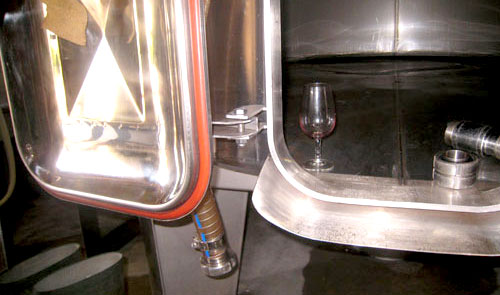 |
|
After a number of different procedures that take about six weeks to complete, the fresh wine is released from her stainless steel penitentiary and transferred to French oak barrels. |
| There she can finally find some peace. In the timeless slumber of the cellar she is granted twelve months to dream, ripen and become delicious. |
|
